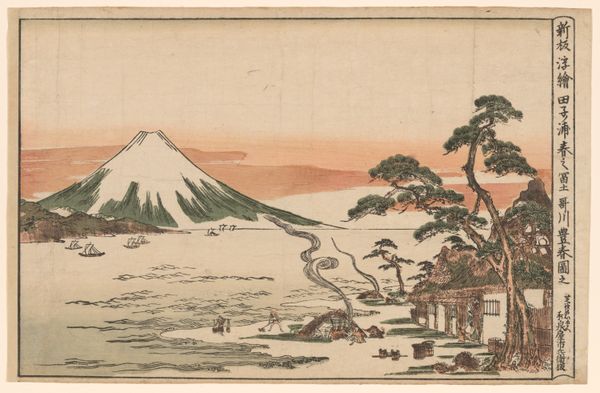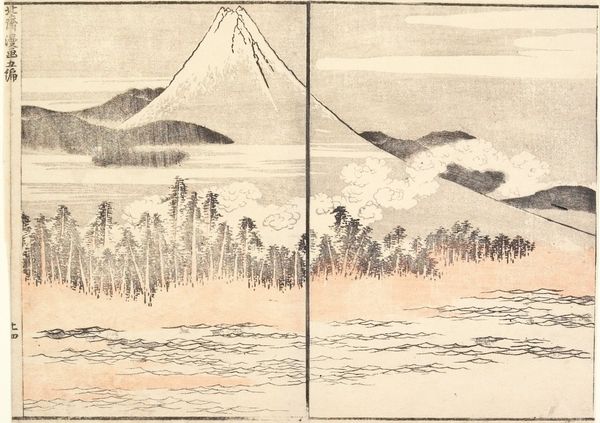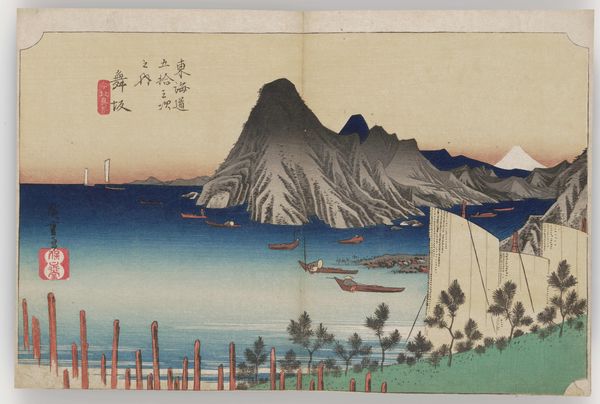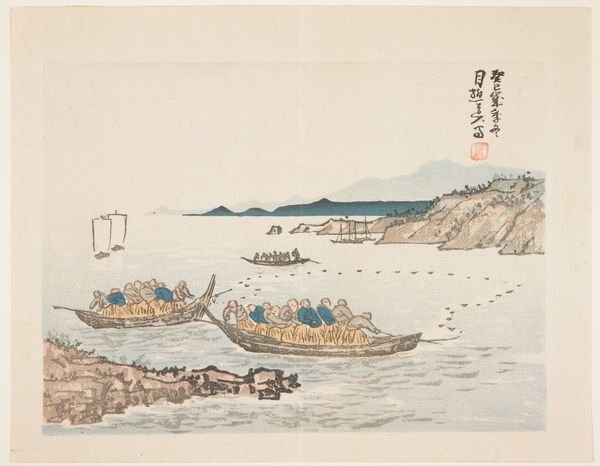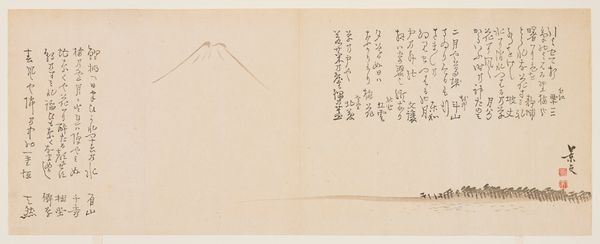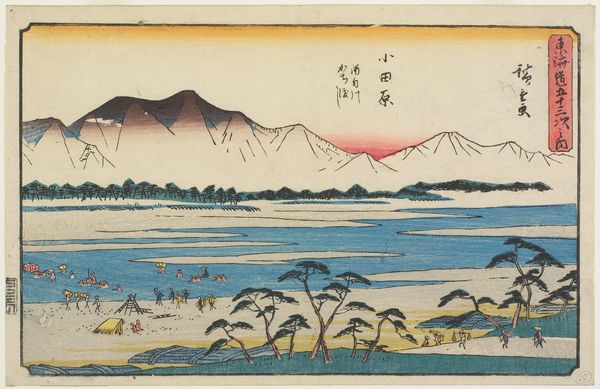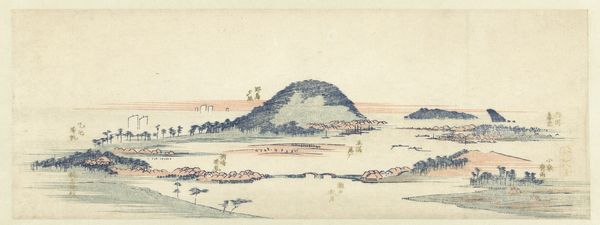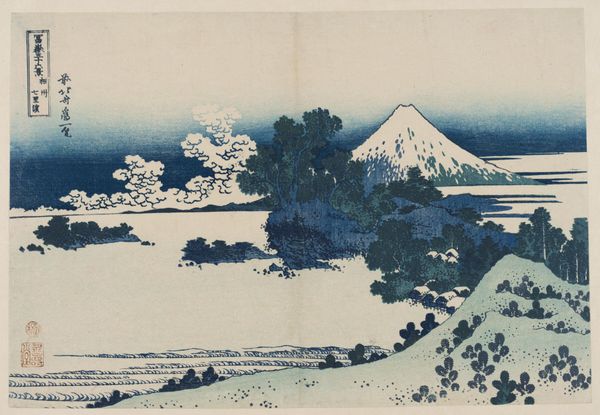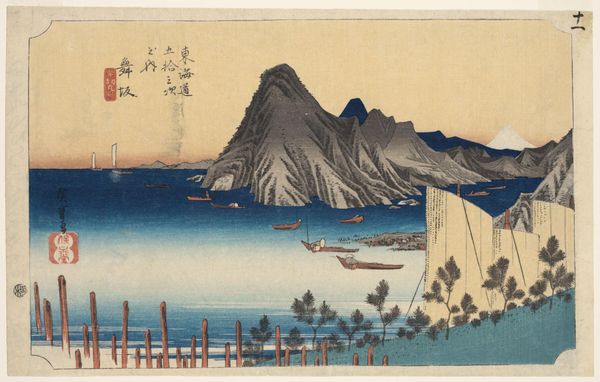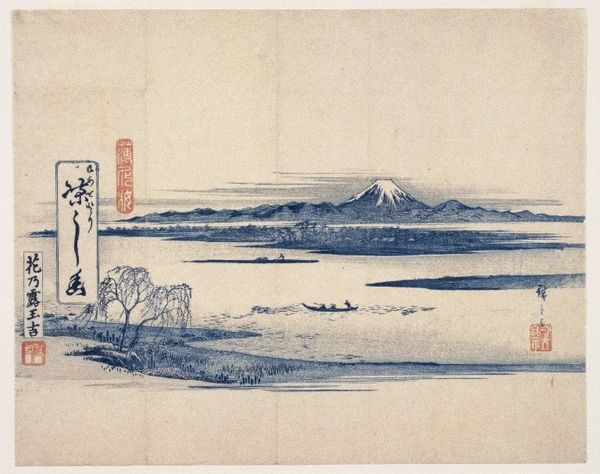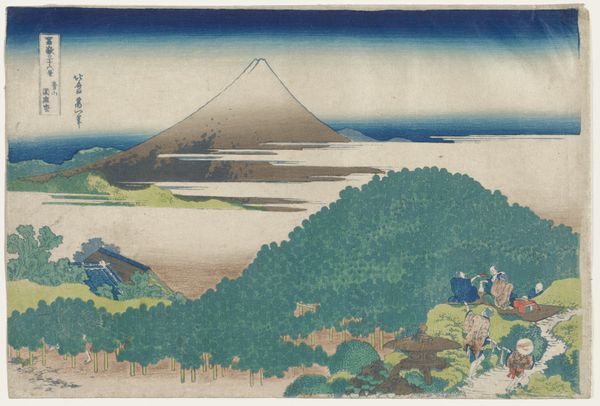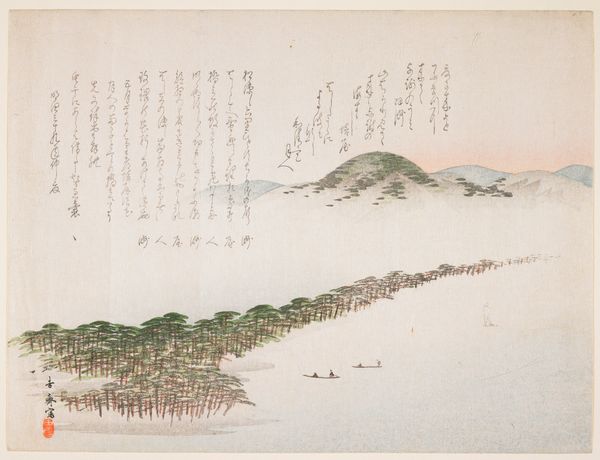
#
light pencil work
# print
#
pencil sketch
#
incomplete sketchy
#
japan
#
personal sketchbook
#
ink drawing experimentation
#
sketchbook drawing
#
watercolour bleed
#
watercolour illustration
#
sketchbook art
#
watercolor
Dimensions: 9 3/16 × 11 9/16 in. (23.4 × 29.3 cm) (image, sheet, uchiwa-e)
Copyright: Public Domain
Curator: Immediately, I am struck by its dreamlike quality. There's something ephemeral about the washes of color, almost like a fading memory. Editor: Indeed. We're looking at a print entitled "Mt. Fuji" by Yamada Hōgyoku, dating back to the 1830s. It’s part of the collection at the Minneapolis Institute of Art. The artist employed watercolor illustration in its making, which lends itself to the piece's somewhat translucent and understated affect. Curator: Watercolor bleed... the process seems essential to understanding its atmosphere. Was it meant to emulate mist? The social context, with Fuji-san having the symbolism it does, this lends the material with inherent value. The print, made by hand as a commodity, and further traded and collected— this lends the piece its significance to society. Editor: The print as a medium was vital. Consider the sociopolitical context. Landscape prints like these circulated widely. They spoke to a burgeoning interest in travel and a romanticized vision of the natural world. Curator: I am really drawn to the economy of the marks, and its incomplete sketchy quality as you examine closely. What strikes me further is how "incomplete" elements are tagged to be. The concept of completeness is of human construction: Nature never declares a peak "finished." Editor: It’s a fascinating observation. Its incomplete nature aligns with Japanese aesthetics of "wabi-sabi," valuing imperfection and transience. This reflects in the public reception of the work then and how its being consumed. Museums, the audience— how everyone involved ascribes the meaning in varying interpretations through culture, is of great importance. Curator: True, yet thinking about production; printmaking itself, is a process, where these tools dictate that sense of style with the image and mark-making, and informs a reading too. Editor: I see your point, that technique is a defining lens of viewing here as well. Curator: It enriches the story. Editor: Absolutely. It adds depth to our appreciation.
Comments
No comments
Be the first to comment and join the conversation on the ultimate creative platform.

